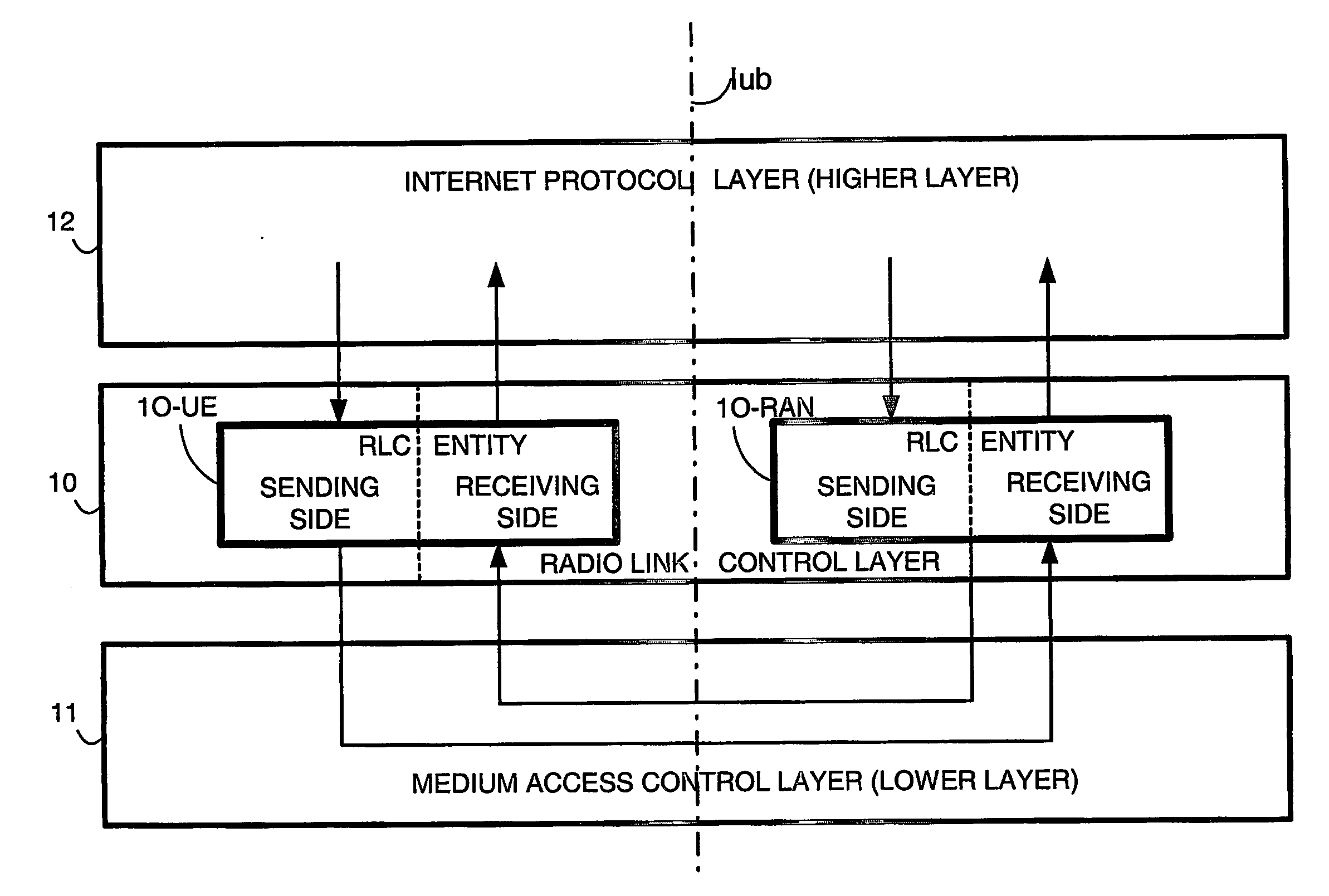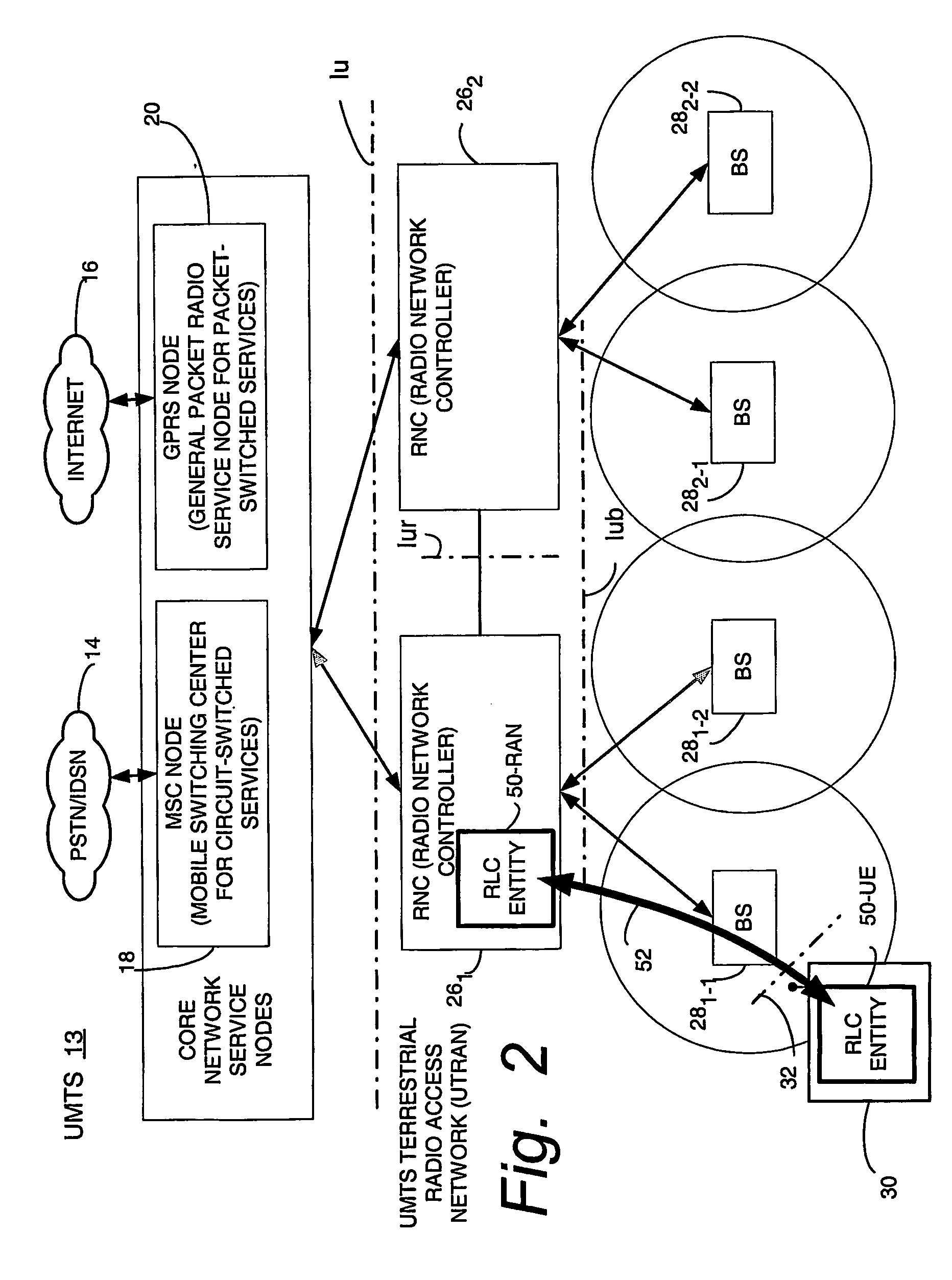RLC Window Size Reconfiguration
a radio link control and window size technology, applied in the field of wireless telecommunications, can solve the problems of large amount of ue memory being unused for most ues, unable to allocate memory for the first ps rab, and reducing performan
- Summary
- Abstract
- Description
- Claims
- Application Information
AI Technical Summary
Problems solved by technology
Method used
Image
Examples
first example embodiment
/ Mode for UE
[0065]In a first example embodiment and mode of operation, the radio link control (RLC) entity 50-UE through its RLC reconfiguration logic 200-UE: (A) discards any downlink RLC protocol data units (PDUs) which were received as being within the old receiver buffer window but which are outside the new receiver buffer window; and (B) retains in the radio link control (RLC) buffer memory any uplink RLC protocol data units (PDUs) whose receipt by the radio access network has not been positively acknowledged.
[0066]Rationale for the first embodiment / mode is based on considerations of effects in reducing the window both on the receiver side and the transmitter side. Concerning reduction of the receiver window, when the receiver window is reduced, some of the PDUs received in the old receiver window may end up being outside the new receiver window. In order to free memory in the first embodiment these PDUs are discarded in the UE and treated as not being received. This implies th...
second example embodiment
/ Mode for UE
[0080]In some regards a second example embodiment and mode of operation is more sophisticated than the first embodiment / mode. In the second example embodiment and mode of operation, the radio link control (RLC) entity through its RLC reconfiguration logic 200-UE: (A) retains all downlink RLC protocol data units (PDUs) stored in the receiver buffer, even if outside the new receiver buffer window until the receiver buffer window can be advanced; and (B) retains all uplink RLC protocol data units (PDUs) stored in the transmitter buffer even if outside the new transmitter buffer window.
[0081]In view of the foregoing, FIG. 7 illustrates selected, basic, representative actions performed by a RLC entity 50, and RLC reconfiguration logic 200-UE in particular, in accordance with the second embodiment and second mode during a RLC reconfiguration operation. In similar manner as with the preceding RLC reconfiguration operation of FIG. 6, as action 7-1 the UE RLC entity 50-UE checks ...
PUM
 Login to View More
Login to View More Abstract
Description
Claims
Application Information
 Login to View More
Login to View More - R&D
- Intellectual Property
- Life Sciences
- Materials
- Tech Scout
- Unparalleled Data Quality
- Higher Quality Content
- 60% Fewer Hallucinations
Browse by: Latest US Patents, China's latest patents, Technical Efficacy Thesaurus, Application Domain, Technology Topic, Popular Technical Reports.
© 2025 PatSnap. All rights reserved.Legal|Privacy policy|Modern Slavery Act Transparency Statement|Sitemap|About US| Contact US: help@patsnap.com



